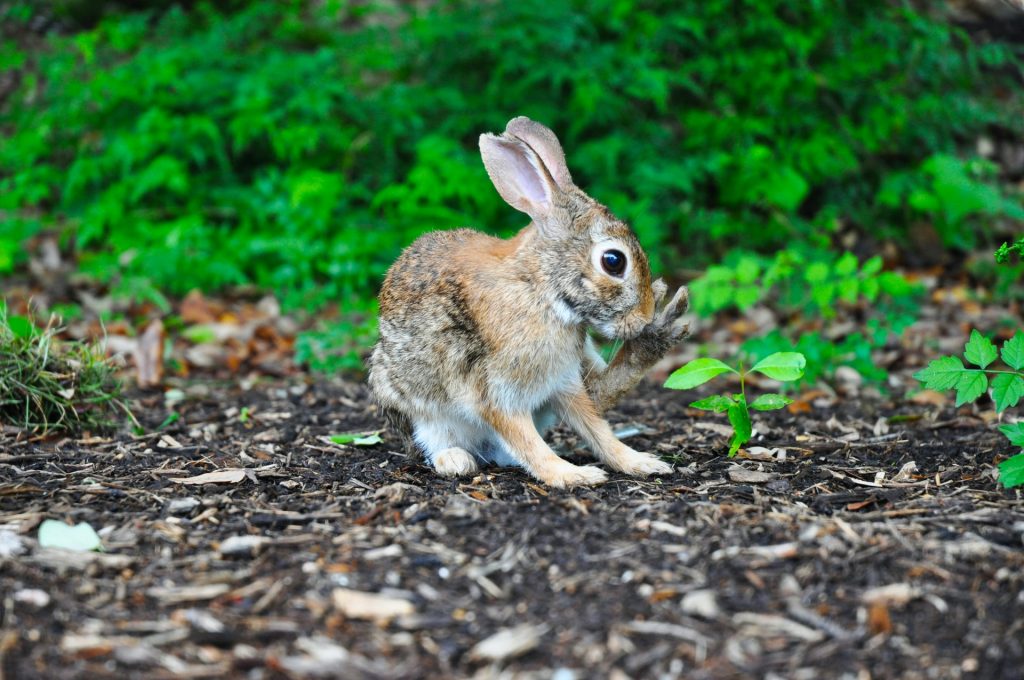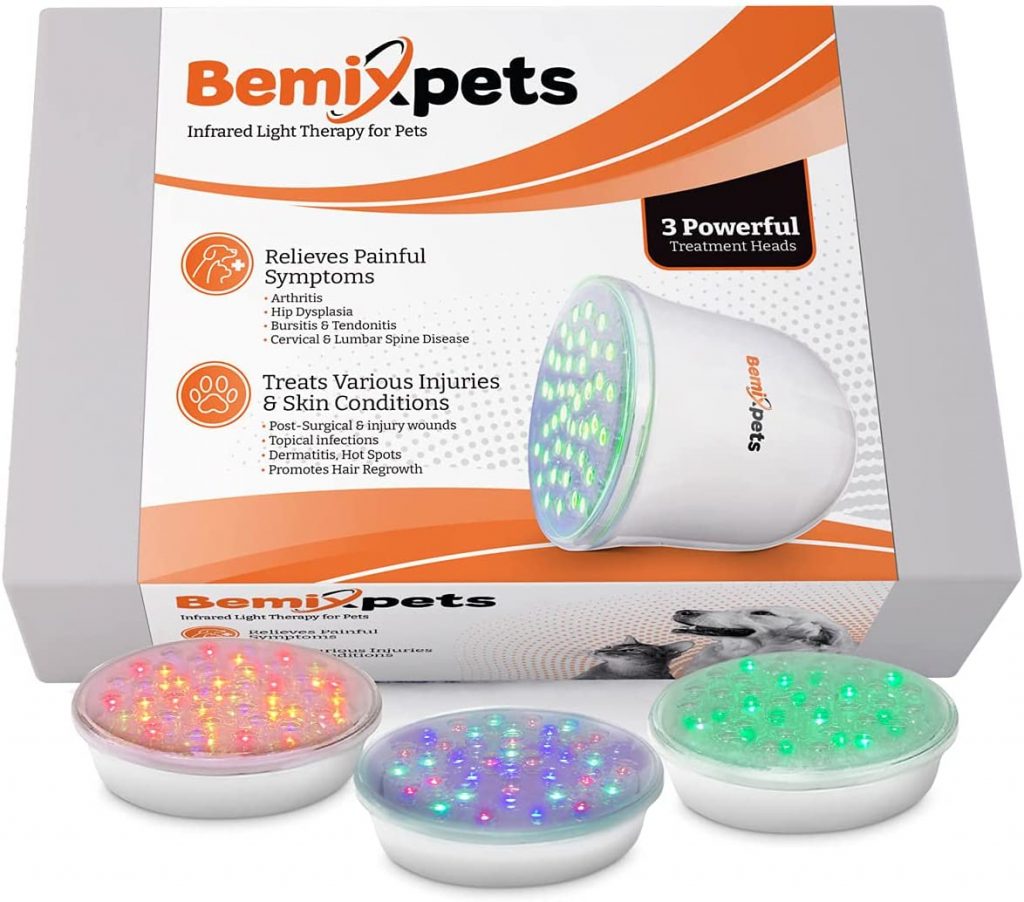
Rabbits are some of the most adorable little fur balls in our homes and the 6th most popular pets. But, as we’ll see, if you find excessive fur balls around your rabbit, your little buddy may have a skin condition that beckons attention. In this post, we’re going over the basics of your top 7 commonest skin problems, their signs and symptoms and their remedies.
Contents
1. Urine scalding
Can you imagine having urine or faeces clinging onto your skin? With all the bacteria in them, is it any wonder that the skin gets nasty after a while? Unlike cats or dogs, rabbits aren’t known for cleaning after themselves (literally), so after releasing they may have remnants stuck around the areas.
Urine and faeces build-up can cause chemical burns on the skin of your rabbit, giving them red, nasty-looking spots. Luckily, this is not a serious health problem—even though if unattended it might turn into one, starting with infections in the scalded skin—and easy to fix: Keep your rabbits and their environments clean at all times.
2. Wounds
Much like us humans, rabbits are social animals, and many people have at least two so that they won’t suffer loneliness. But also like not all humans get along, not all rabbits do, either. ?There are a few tips to know if your rabbit is lonely. Though by no means unique to the rabbits, dominance behaviour can and do lead to physical fighting and subsequent injuries for these friendly-looking balls of fur. Sometimes the fighting can be seen as territorial behaviour akin to same in dogs.
Naturally, fighting can lead to injuries which will cause fur loss and skin wounds and subsequent infections. While the wounds and infections can be treated (to be covered in following sections), the fighting itself can’t be treated with meds. If you find wounds in your rabbits that are not exposed to other animals, you might wanna separate them for a while and see if the problem persists after reuniting them. If it does, it’s a good idea to take them to an expert and see what’s the root problem for their behaviour.
3. Fleas and mites

The most common mites in rabbits reside in their ears and fur. In either site, they could cause crusty skin in the area, painfully irritable sensation in ears and alopecia (excess fur loss). Fortunately, mites can be easily dealt with by taking your rabbit to the vet, who will then prescribe them anti-parasite treatments.
Note, however, that mites are very contagious among rabbits, so make sure you treat all your rabbits and not just the one that’s currently expressing symptoms. Along the same line, keeping your rabbits away from wild rabbits and other pets you don’t know might not be a bad idea.
Another problem your rabbits might face is fleas, often caught when in the vicinity of cats, dogs, or wild rabbits before your took them home. Similar to mite treatments, your vet will prescribe flea treatments for both your pet rabbits and the environment they live in, since they might catch it again once you take them home from the hospital. Since both fleas and mites are parasite problems, it is a good practice to check your rabbits’ fur and skin and groom them or help them groom themselves daily so as to keep their bodies clean.
4. Bacterial skin infections
We’ve mentioned skin infections several times by now, but haven’t really gotten into it yet. So here it is.
The commonest skin infection in rabbits is bacterial. Though it’s not a severe condition, the symptoms can be alarming, which include excess fur loss, pustules (bulges of skin containing yellow pus), lethargy, anorexia (losing too much weight by not eating), to name a few. If your rabbits are scratching themselves a lot, squirm in uncomfortable ways and not eating, not moving much, take a closer look at their skin—they might be under attack by bacteria!
The precise diagnosis and medical treatment of bacterial infection, of course, are not recommended to perform at home and better done by a veterinarian, but there are things you can do to help prevent future infections and help healing.
One thing that might help is keeping a dry and clean environment for your rabbit. We all know from common sense that moisture and warm temperature make ideal breeding grounds for bacteria, so keeping a cool and not humid environment can help prevent them from breeding. Another thing to look out for is your rabbit’s weight. Overweight rabbits can have lots of extra folds in skin, where moisture can be trapped, and we already know what that does, don’t we?
5. Ringworms
Ringworms are a kind of common fungal infection of the skin and have a look of patches of red, swollen circles. In rabbits, without looking directly at their skin, it can show up as excess itchiness and loss of fur.
Though not a serious disease, it is, as we can tell from the signs of infection, difficult to diagnose and treat at home. A visit to the vet for this infection is inevitable and better be done as soon as possible because ringworm can infect not just rabbits, but any other pets in your home, as well as people.
6. Bumble foot
As the name suggests, bumble foot looks as painful to us as it feels to our dear rabbits. It is a condition very easy to spot: on the soles of your rabbit there will be swollen red spots as if stung by a bumble bee. The rabbits that tend to develop this condition are the ones that are overweight and live in a humid environment. Sounds familiar? That’s because the bumble foot can result from skin bacterial infection.
Due at least partially to the position of the infection, if left untreated, a bumble foot might quickly worsen into broken skin, wider-spread infection of joints and tendons around the feet, and inflammations, just to name a few. Obviously, this is one condition you don’t want to overlook. The treatment usually involves vet-prescribed antibiotics and pain-control medicines. If let progressed to a severe stage, simple relief of the swelling and pain of the feet is not enough, and surgical intervention might be necessary.
On the home front, it is important to keep your rabbit on a light and green diet to aid in its healing.
7. Myxomatosis
This is the Big Bad of skin conditions for your rabbit, so tune in. Myxomatosis is a viral infection that is quite severe. Though started as a skin condition, this virus can fast travel to the eye, the genitals, the lung and the liver. Worse, it compromises the infected rabbits’ immune system and exposes them to further infections of all kinds.
Outwardly, myxomatosis shows up as swelling around the eyes (also watery), face, ears and genital areas. Your rabbit might also have a runny nose and, upon closer inspection, lumps and ulcers and scabs under the fur on the skin. Behaviorally, you might observe your furry friend eating and drinking with difficulty and breathing abnormally. They can also develop a fever.
While all the previous suggestions about the surroundings of your rabbits—keeping the environment dry and clean, regular check-in and grooming, disinfect your other pets, keeping wild rabbits and other animals away—are still good practice, the best prevention of myxomatosis is through vaccination.
A vaccinated rabbit has a pretty good chance of fighting the disease and surviving even after contracting the viral disease, an unvaccinated one isn’t so lucky. In fact, unvaccinated rabbits nearly always die if become infected. Should things come to this, euthanasia is often recommended to prevent them from suffering. So if you’re planning to get a couple of the furry little cuties as pets, the first very necessary step is to ensure they have their vaccinations up-to-date.
In conclusion, rabbits can have a variety of skin problems, with different causes, ranging from physical wounds to parasite infection to bacterial and fungal infection to a deadly viral infection resulting in myxomatosis. Except for the last one, the others may be interconnected.
For instance, urine scalding may start as merely skin irritations, it may soon turn into a bacterial infection due to the build-up of urine residues which are in themselves full of bacteria. The most ubiquitous issues involve mostly day-to-day detailed caretaking of your rabbits as well as their living environments. Same as humans, it’s hard for rabbits to live healthily when the environment is pregnant with bacteria, fungi, and parasites ready to prey on their health.
That said, when one of the milder problems flare up, while waiting on an appointment with the vet, there’s one home remedy you might want to try for relieving the symptoms. With recent technology innovations in laser and light therapy, Bemix Pets has come up with a set of therapy lights, each designated for a specific set of effects. One of these promotes the healing of skin conditions. Even if not curing the disease itself, this simple and economical home kit could relieve your fluffy ball temporarily from discomfort.

While most of the above-mentioned problems are very common in rabbits and totally preventable by keeping their home clean and dry and inspect regularly for parasites, these measures cannot prevent a viral attack.
To take good care of your little rabbits, make sure they and other pets are all fully vaccinated, introducing new pets into your home after at least three weeks of their vaccination, and when concerned, take them to a vet as soon as possible.





